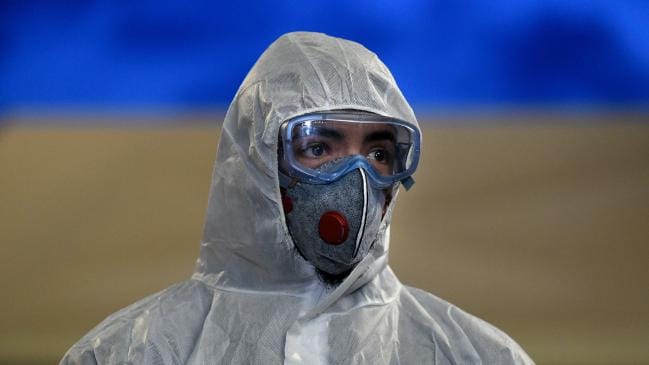
This article is more than
6 year old
Italy’s coronavirus death toll has now surpassed China’s, with the country leaving it too late to do one thing that could have helped stop the spread.
The country is working to take control of the situation but Professor Robert Booy from the University of Sydney, said there is one mistake that is making it harder to control the spread.
“They recognised the problem too late,” Professor Booy said in a video released by the The Australian Academy of Science.
“If you’ve got a doubling every three days as they might have had, you can go from 1000 to 4000 by the end of the week and by the end of the second week you can go from 4000 to 16000.
“The difference between 1000 and 16,000 is only potentially two weeks.”

Australia can learn from how other countries have been impacted by the coronavirus, with Professor Booy saying the focus needs to be on flattening the curve of the outbreak.
“Flattening the curve is really important. It’s going to be how we will be able to cope with this pandemic,” he said.
“What it means is that instead of the rate of rise being very rapid, anywhere between doubling every three to six days, we cut it back to doubling maybe every two to three weeks.
“Instead of the number of cases rising so rapidly, and the healthcare system can’t cope, instead of that, we keep it at a level where the hospitalisation and intensive care admissions are able to be coped with by medical personnel.”
All the recommendations made by the government including social distancing, bans on mass gatherings and not shaking hands will all help “dramatically reduce transmission”, Professor Booy said.
Social distancing, all the measures that have been put in place, not shaking hands. Dramatically reduce transmission.

Along with flattening the curve, experts are also working to develop a vaccine for the COVID-19 virus.
The timeline until that vaccine has been available has been set at about 12 months, but Damian Purcell from the Doherty Institute said that is an “extraordinarily optimistic” estimate.
“To make a vaccine within one year would be extraordinarily optimistic really because the real great difficulty with making a vaccine is not just producing the candidate and having one vial of the vaccine but actually proving that that’s going to work across a population,” Professor Purcell said
“So that needs extensive testing in large numbers of people and manufacturing at a level of purity that passes regulatory agencies.”
He noted that it takes a long time to produce a vaccine as it has to go through numerous trials to make sure it doesn’t have any negative impacts.
“This is a totally new virus that none of us have seen before and we’re firstly looking at how patients respond to the virus. Pleasingly, some of the patients recover quite quickly,” Professor Purcell said.
“And when we look at the virus we’ve already seen that it’s not mutating very, very rapidly. So we are putting it in the bracket of optimism which is, at best, around 12 months.”